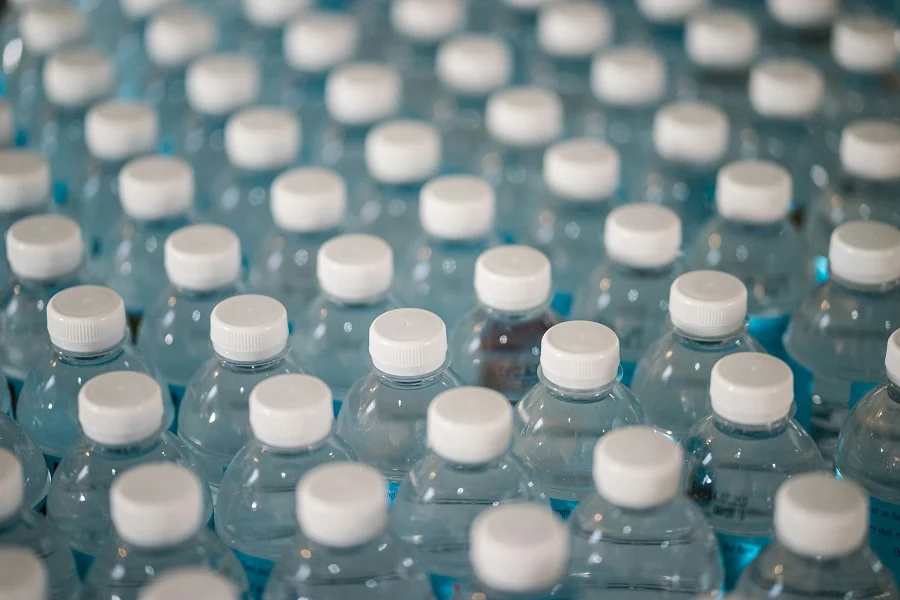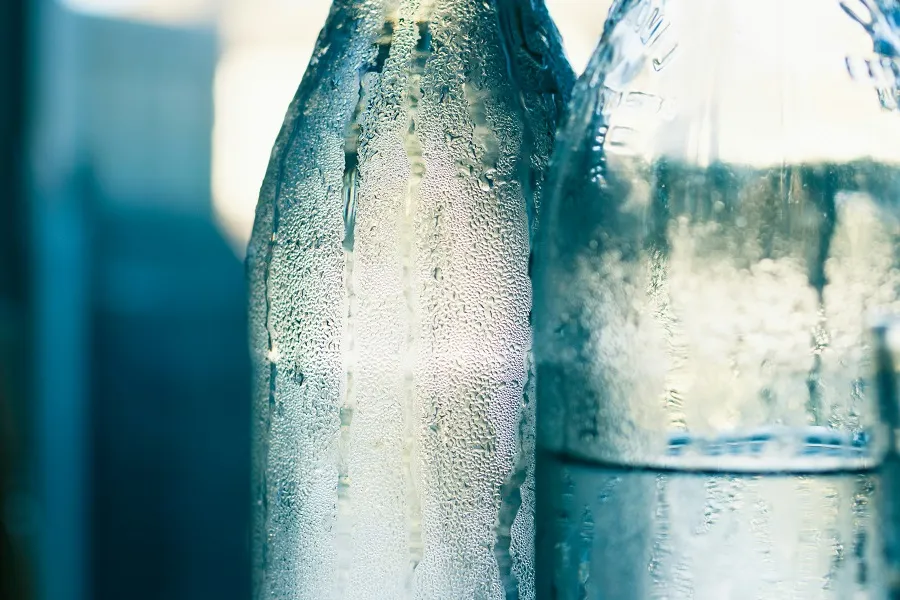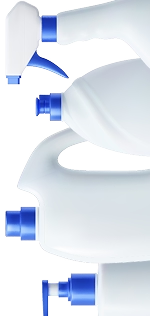How Much Does It Cost to Make a Plastic Bottle?
- ByRobert "Rob" Starmann
- July 8, 2025
In today's competitive market, understanding the cost factors behind plastic bottle production is essential for businesses that rely on these containers for their products. Whether in the food and beverage industry, personal care, household goods, or pharmaceuticals, knowing what influences the price can help you make more informed purchasing decisions and potentially reduce your packaging expenses.
If you’re not sure where to begin, rely on our team. As a leading plastic bottle packaging provider, Ashland Container has developed a deep understanding of the plastic containers market and what drives costs for 50+ years of industry experience. Let's explore the key factors that determine plastic bottle pricing and how you can optimize your packaging budget.
Understanding Plastic Bottle Pricing Factors
The cost of plastic bottles isn't arbitrary — it's determined by several interconnected factors that manufacturers and distributors must consider. The better you understand these elements, the easier it is to anticipate costs and identify potential savings opportunities.
Raw Material Costs: What Drives Bottle Prices
Raw materials typically account for 60-70 percent of the total cost of a plastic bottle, making them the most significant price factor. The market for plastic resins is dynamic, with prices that fluctuate based on petroleum market changes, global supply and demand dynamics, economic factors, and seasonal variations.
These fluctuations cause plastic bottle prices to shift throughout the year, highlighting the value of establishing a relationship with a reliable supplier like Ashland Container, which can help manage these variations effectively.
The main materials used in bottle manufacturing each have their cost profiles and ideal applications:
Each material brings different properties that may influence your bottle selection beyond just cost; clarity, barrier properties, durability, and environmental considerations all play important roles in determining the best material for your specific application.
Production Volume: How Quantity Affects Your Price
Volume is another critical factor in determining the unit cost of plastic bottles. The plastic bottle manufacturing industry operates on economies of scale, where larger orders significantly reduce the per-unit cost of production. When you place higher volume orders, you benefit from reduced setup costs as the machinery configuration and tooling expenses are distributed across more units.
Consider that production efficiency also improves with longer production runs that require fewer changeovers, allowing manufacturers to optimize their processes. Additionally, bulk material purchasing offers access to better raw material rates, further driving down costs. These volume advantages translate directly to your bottom line.
For example, a standard 16-oz PET water bottle might cost between $0.30 and $0.35 per bottle at volumes of 10,000 units. Increase that order to 50,000 units, and the price typically drops to $0.20-0.25 per bottle. When volumes exceed 100,000 units, you could pay as little as $0.18-0.20 per bottle. While these are only estimates based on design, material specifications, and market conditions, they illustrate the substantial impact volume has on unit pricing.
Bottle Design and Complexity: Impact on Cost
The bottle's design is a key driver of packaging costs. Simple choices can yield significant savings, while more intricate features substantially increase production expenses. Consider these factors:
- Shape complexity: Basic cylindrical shapes are generally 20-30 percent less expensive than custom contours. These shapes require specialized molds and more complex production processes.
- Embossing and texturing: Adding these elements to the design can increase mold costs by 5-15 percent, adding detail but increasing expenses.
- Neck finish and closure: Standard neck finishes and closures are more economical. Custom closures and specialty neck designs add to costs, especially considering thread designs and sealing requirements.
- Wall thickness: Thinner walls use less material, lowering costs, however, durability may be compromised. Balancing structural requirements with cost considerations is crucial.
Plastic Packaging Cost Breakdown by Bottle Type
Plastic bottles are versatile, but costs vary significantly depending on the bottle type, intended use, and degree of customization. Let's break down common plastic bottle categories and their associated price ranges so you have a better idea of what to expect.
Standard Water and Beverage Bottles
These high-volume bottles benefit from production efficiencies, leading to competitive pricing. Costs are primarily influenced by size, material weight, and order volume. Expect to pay:
- 8-12oz bottles: $0.08-0.12 per unit (50,000+ quantity)
- 16-20oz bottles: $0.10-0.15 per unit (50,000+ quantity)
- 1-liter bottles: $0.15-0.22 per unit (50,000+ quantity)
- 2-liter bottles: $0.20-0.30 per unit (50,000+ quantity)
Specialty Container Pricing
Containers designed for specific industries have higher prices due to unique requirements:
- Pharmaceutical bottles: $0.25-0.50 per unit (higher-quality resins, specialized testing, child-resistant features).
- Food-grade containers: $0.18-0.40 per unit (FDA-approved materials, barrier properties, hot-fill capabilities).
- Chemical and industrial containers: $0.30-0.80 per unit (chemical resistance, thicker walls, safety features).
Custom Design Considerations and Costs

Custom designs boost brand differentiation but add costs:
- Mold development: $15,000-$50,000+ (simple vs. complex designs, multi-cavity molds).
- Minimum order quantities: Custom designs require higher MOQs (often 50,000+ units). Lower volumes increase the premium.
- Design assistance: CAD design services ($1,000-$5,000), prototyping ($500-$2,500 per iteration).
Don’t feel overwhelmed by the process of finding the right bottle at the right price. At Ashland Container, we navigate custom design and cost, offering services that maximize brand impact while managing expenses.
What Affects the Final Price You Pay?
Beyond the base production costs, several factors influence the final price you'll pay for plastic bottles:
- Transportation and logistics: Shipping costs depend on volume (empty bottles occupy a lot of space), distance (local sourcing is cheaper), freight mode (truck, rail, ocean, air), and fuel surcharges.
- Industry price fluctuations: Resin price volatility (linked to petroleum), supply chain disruptions, energy costs, and regulatory changes cause price fluctuations. Mitigation strategies include long-term contracts, and just-in-time inventory programs.
- Seasonal demand changes: Demand varies seasonally (beverage industry in summer, personal care during holidays, household products in spring/fall). Off-season ordering, advanced planning, and warehouse programs can optimize purchasing.
Cost-Saving Strategies for Buyers
Thankfully, you can be strategic in your purchasing practices to help reduce your plastic bottle costs without compromising quality.
Bulk Purchasing Benefits
Consolidating orders to increase volume is one of the most effective ways to reduce unit costs. The economics of plastic bottle manufacturing heavily favor larger production runs, with each volume threshold unlocking greater savings. When you can increase your order size, manufacturers pass along savings from more efficient production cycles, reduced setup frequencies, and better material purchasing power.
While bulk purchasing offers undeniable financial advantages, don’t forget to factor in practical considerations alongside the price savings. Storage capacity requirements can present a significant challenge, as larger orders need more warehouse space.
Inventory carrying costs add another financial dimension, including insurance, handling, and the opportunity cost of capital tied up in inventory. Product lifecycle and potential design changes also need consideration — ordering too many bottles that may become obsolete presents its own financial risk. Cash flow management remains another vital factor, as the large upfront investment must be balanced against gradual usage over time.
At Ashland Container, we understand these challenges and offer warehouse programs that allow you to purchase in cost-effective volumes while managing your storage limitations. These programs provide the best of both worlds: the economic benefits of bulk purchasing without the full burden of storing your entire inventory.
Lead Time and Standardization: Keys to Cost-Effective Packaging
Strategic planning around lead times and the degree of customization can significantly impact your packaging costs.
Lead time planning for savings:
Providing longer lead times to your bottle supplier can result in significant cost savings.
- Rush orders (1-2 weeks) can increase pricing by 10-30 percent.
- Standard lead times (3-5 weeks) offer base pricing.
- Extended lead times (6+ weeks) may unlock 5-10 percent discounts, allowing optimal production scheduling and efficient logistics.

Standardization vs. Customization: Balancing Costs and Brand
Strive to find the right balance between standardized and custom bottles to optimize costs:
- Standardization benefits: Lower unit costs, reduced lead times, flexible supplier options, and lower minimum order quantities.
- Customization value: Brand differentiation, premium positioning, improved functionality, and enhanced consumer experience.
The cost-efficiency spectrum ranges from standard stock bottles (most cost-effective) to standard bottles with custom labeling, stock molds with custom features, and fully custom bottle designs (most expensive). Increased customization enhances brand distinction but also raises costs.
Value-Added Services and Their Worth
Beyond the basic bottle cost, value-added services can provide efficiency and enhance your product's appeal.
Decorating and Printing Options
Bottle decoration directly impacts consumer perception and can be more cost-effective when integrated with the bottle supply:
Cost-saving tip: Incorporating decoration at the bottle source often reduces overall costs compared to shipping bottles to a secondary decorator.
Optimize Costs with Inventory Management and Quality Assurance
Strategic inventory management and rigorous quality control are essential for optimizing packaging costs:
Just-in-Time Inventory Services
Just-in-Time (JIT) inventory programs can reduce overall expenses through:
- Reduced warehouse space needs
- Lower inventory carrying costs
- Minimized risk of design obsolescence
- Improved cash flow management
Typical JIT structures involve forecast-based management, minimum/maximum inventory levels, regular deliveries, and safety stock provisions. While unit costs might be slightly higher, JIT's total cost of ownership is often lower considering all related expenses.
Quality Assurance and Testing
Quality testing ensures bottles meet specifications and perform as required. Here are some common services:
- Dimensional testing
- Drop testing
- Material analysis
- Leak testing
- Compatibility testing
While adding incremental costs, quality assurance prevents costly production issues, product wastage, and consumer dissatisfaction to deliver significant long-term value.
Partner with Ashland Container for Optimized Plastic Bottle Packaging Solutions!
Navigate the complexities of plastic bottle costs with a trusted partner. Contact us for expert advice, tailored solutions, and 50+ years of industry experience. Get free expert advice today.
Partner with Ashland Container for Strategic and Cost-Effective Packaging
Navigating the complexities of plastic bottle manufacturing costs can be overwhelming. It’s a process that requires expertise and a strategic approach. Factors like design complexity, material selection, and production volume all impact the final price.
Since 1974, Ashland Container has been committed to delivering value-driven packaging solutions. We offer transparent pricing, leveraging our 50+ years of industry experience and strong supplier relationships to secure the best value for our clients. We minimize the costs of logistics and provide expert recommendations tailored to your needs. If you’re looking for a partner in every sense of the word, lean on our team of experts.
Contact us today for a customized quote and discover how Ashland Container can optimize your packaging investment, ensuring your products stand out while staying within budget.





